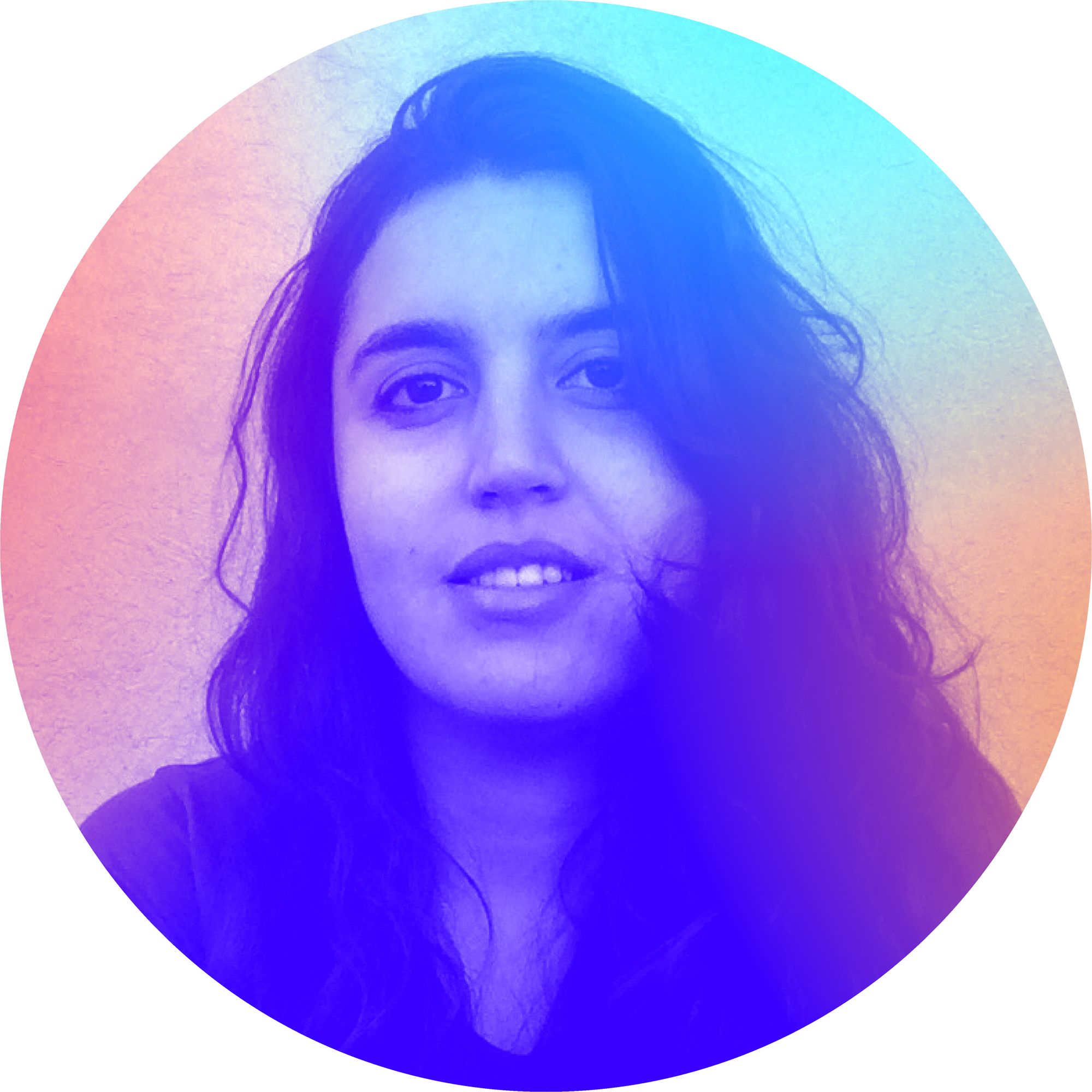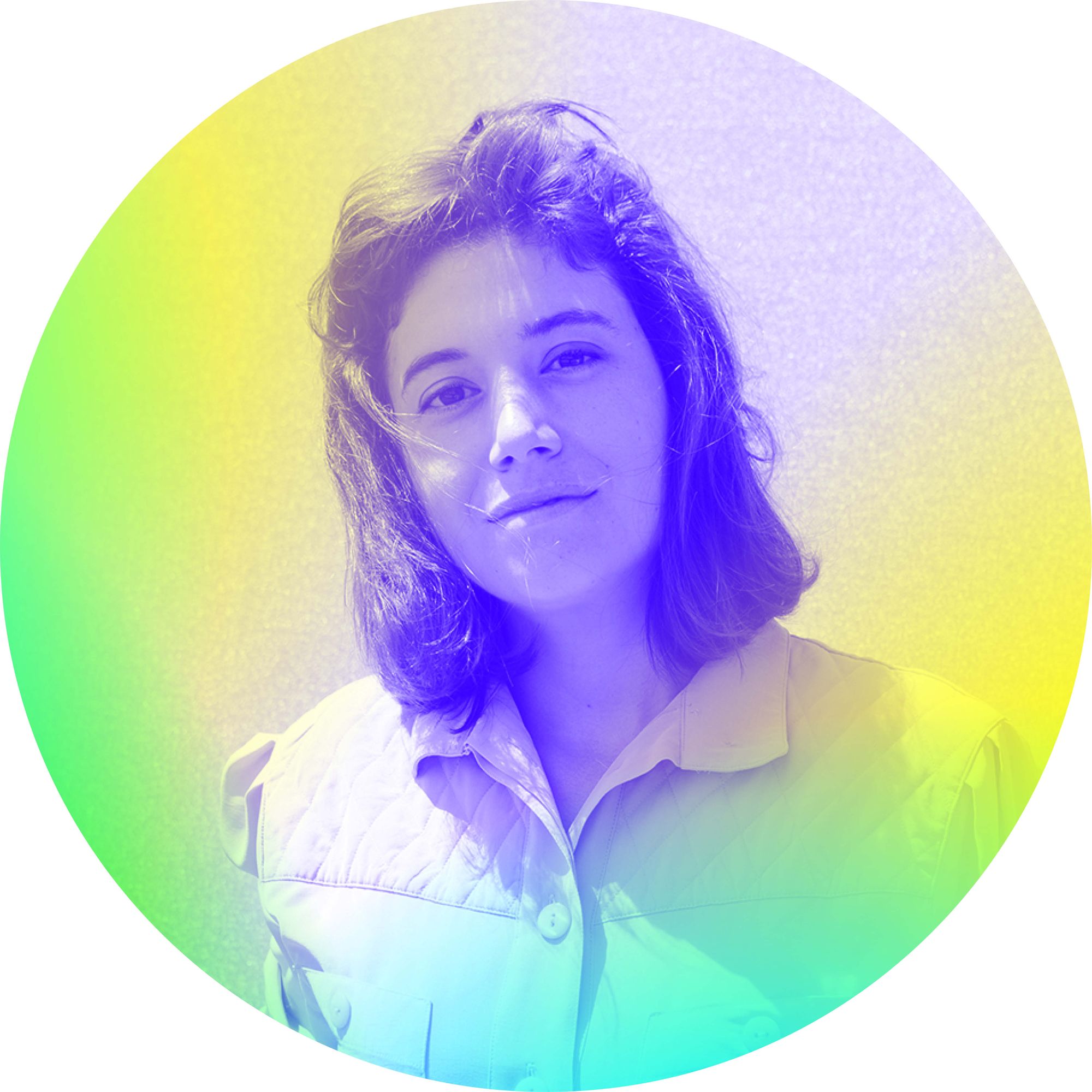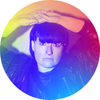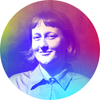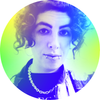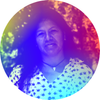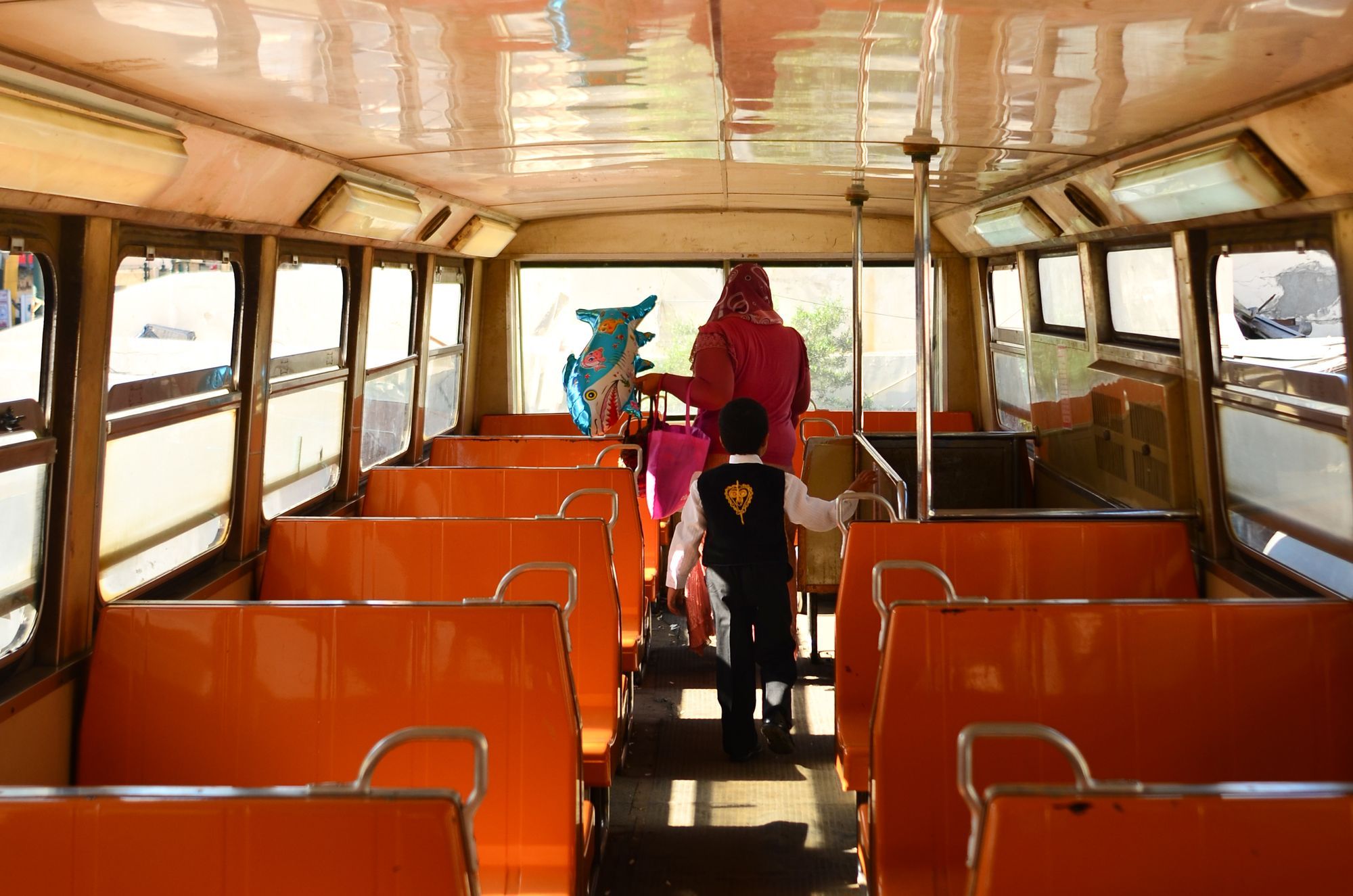
It’s the fourth hour of a collective reflection workshop within For Us, With Us, By Us –لنا، عنّا، معنا. Held in downtown Cairo in May 2023, this series of on-site and offline events centers South West Asia and North Africa (SWANA) cultural producers’ voices and explores the themes of transnational identities and practices. My attendance is framed within various roles: a participant, a representative for Futuress, and a mother taking care of my children—all while reflecting on complex identities and roles. Navigating and weaving together the politics of different spheres is a key focus of the program, not just as a subject of discussion but also as the core of its organizational politics.
Given the limited access to cultural funding in Egypt, a country grappling with political and economic crises, the curatorial team partnered with Futuress, which, as a Swiss-based platform, was able to provide a gateway to foreign cultural funds. The behind-the-scenes aspects of cultural organizing—such as how organizers navigate the exclusionary structures of funding bodies—are central to creating access and providing space. Here, the organizers ensured accessibility for parents, allowing me to attend the program in mid-May 2023 alongside my two children. The workshop at the Contemporary Image Collective space hosts eleven practitioners—six guests and five workshop organizers—who sit around the table, drawing on a collective map, and sharing how they negotiate against the reduction of SWANA identities in their work. Between breastfeeding my one-year-old baby, coming up with drawing prompts for my eight-year-old, and engaging in the conversation, my eyes lock with Egyptian photographer and visual artist Nadia Mounier across the table. She smiles. I’ve been silently cheering her arguments, specifically her points on the difficulties of making a living as an independent artist and the challenges of relying on European funding. During a coffee break, we bond over motherhood, and I leave with a date for a future interview.
Nadia’s interests in image-making are far-reaching, and her practice spans photography, archiving, and curating. Defining herself as a “camera-woman,” her work explores representations of the self and delves into aspects of privacy, censorship, digital stagings, and body performance within public and private spheres. Nadia’s work is elusive—her images candid and staged, bold and frail, mysterious and real. Passionate about collaboration and exchange, she has been managing the Arts and Culture program at The Arab Digital Expression Foundation (ADEF) since 2023.
Back home in Portugal, with vivid memories from Cairo, Nadia joins me over Zoom. This time, uninterrupted, we talk about design education, residency programs, COVID-19, living abroad, independent curating, fundraising, and long-term commitment projects. We discuss the genesis of her two main photographic series, Cairo Snaps, which captures the everyday life of her hometown and explores city photography, and It Wasn’t Really You, Nadia’s long-term investigation of the representation of Arab women in public and private contexts. In the timespan of one hour, we seem to cover it all—all except motherhood, of course, the issue that seems to help forge bonds while surreptitiously vanishing from the picture. Nadia’s work is about this precisely: the tension between the visible and the hidden, what’s exposed and what remains imagined. This interview has been edited for length and clarity.
Nina Paim: How did you first become interested in photography?
Nadia Mounier: It happened by coincidence. I did my BA in Applied Arts at the public Helwan University in Cairo, Egypt, which focused mainly on animation, drawing, and crafting. Interestingly, we didn’t learn about photography. It may sound peculiar now, but back in 2005, when digital photography was just beginning, we were not allowed to use it in our projects. Our teachers viewed the camera as a lazy tool. If you didn’t want to spend two hours drawing a building on the streets, you could simply take a photo, but our professors would get furious and say, “Are you too lazy to draw it live?” It may seem bizarre today, but we had lengthy discussions about how the camera should not be an excuse for avoiding drawing! That’s how my interest in photography began. When I graduated in 2010, it was clear that I wanted photography to be the center of my practice.
A lot of your work deals with gender issues. How was the experience of studying in that program from a gender perspective?
Most of my professors were older men. At that time, it seemed normal and acceptable to be exclusively taught by men—the older they were, the more trust we placed in their knowledge and professionalism. By the time I graduated, younger generations of artists and designers who had continued their studies in the U.S. or Europe were returning to Egypt and starting to take over the departments. Change was underway. Then, the 2011 Egyptian Revolution happened and completely transformed our understanding of everything. I always share this little anecdote about the before and after. In January, just before the protests erupted, I was watching a soap opera, Ragel wi Set Setat (A Man and Six Women). With the Revolution, the program paused for two months, and it eventually resumed in March. But by then, I couldn’t stand to watch it; it felt ridiculous and silly.
Did you start your long-term everyday city photography project Cairo Snaps during the 2011 Egyptian Revolution?
In a way, yes. The Revolution changed our relationship with the city completely; it sparked an impulse to take photos, to document city life. Soon after, in 2012, I left Egypt for the first time to participate in a photography workshop in Marseille, France. When I returned, I saw a different city. Traveling renewed my relationship with Cairo. A friend from Marseille visited a few weeks later. While strolling through the streets of Cairo together, she commented on the patterned car covers and the unique street illustrations. I began to see ordinary things and scenes differently: a guy lifting a bunch of bread on his head while masterfully cycling in the middle of traffic, or another selling colorful bras on a bridge. What initially appeared chaotic now revealed itself as a tapestry of life and culture interwoven with history and tradition. I discovered a renewed sense of connection and appreciation for Cairo’s complexity, realizing that its so-called “chaos” was actually what gave the city its soul.
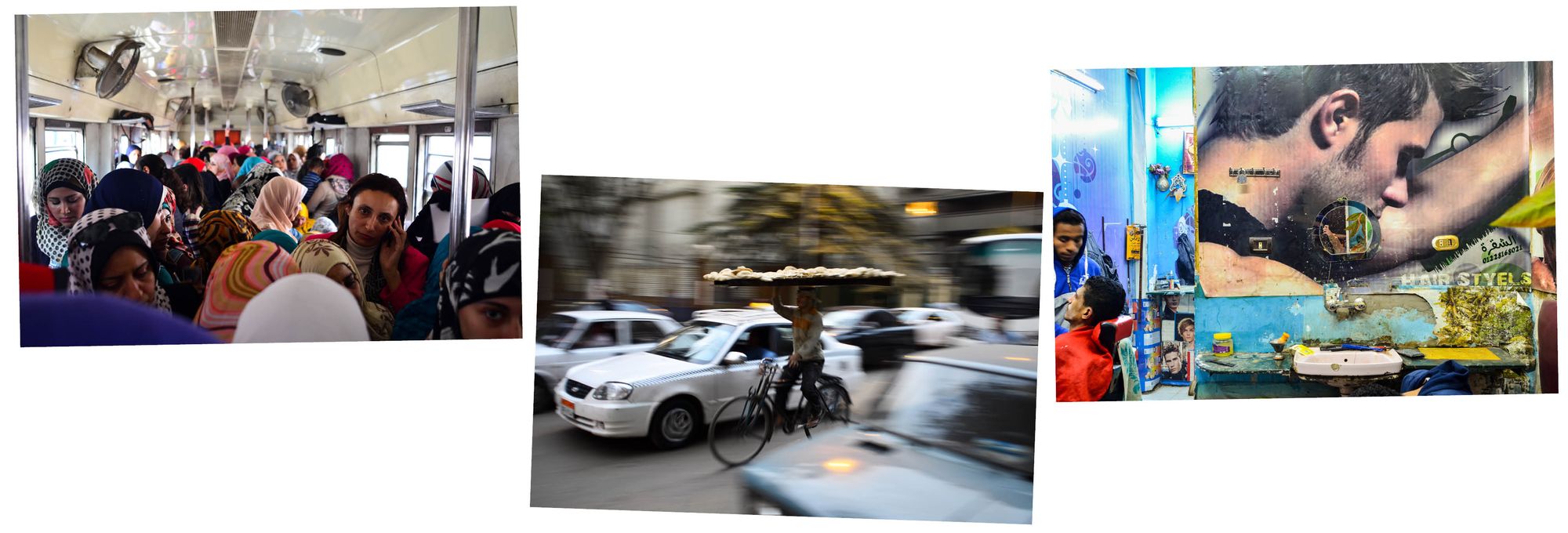
Do you remember what was your first Cairo Snap?
Before 2011, I remember being really afraid, holding the camera tight, not knowing what to shoot. My boyfriend at the time would walk in front of me and say, “Okay, just take my picture.” I took his portrait facing the most important space downtown: Tahrir Square, which means “liberation” in Arabic, and became the focal place of the 2011 Revolution. We had to be fast, and that’s how the title Cairo Snaps came about. I believe that all of the Snaps were an attempt to stretch the meaning of public space. Back then, walking around with a camera around your neck was still possible. After 2011, strangers in the street would stop you and say, “Take a picture of me,” and then they would share their stories. It was like an open mic.
“I believe that all of the Snaps were an attempt to stretch the meaning of public space.”
Things began to change after the 2013 coup. It took some time for the military regime to understand this, but soon things were back to how it all started—or even worse. The regime’s narrative was that photojournalists and foreign agencies were focusing on showcasing negative aspects of Egypt, and that would lead to foreign interference. There was wild propaganda on how cameras could “hurt us” or could be used as a weapon against Egypt; TV commercials that said, “Do not say anything to foreigners.” Then signs with “Photography forbidden” started appearing around any building related to the military, and since the military was again everywhere, we lost these possibilities.
With your second long-term series Was it Really You?, you shifted your gaze from the public to the private. What inspired this change
When I became interested in photography in 2010, I actually first pointed the camera at myself. I started making self-portraits imitating famous paintings, working in my bedroom. Then I moved to the streets. However, by 2015, it had become really difficult to take pictures in public spaces. All of my Cairo Snaps from that period were taken with a mobile phone, which was less suspicious. Holding a camera in public became intense, and it was increasingly common to get stopped by the police or just by common people who wanted to know why you were taking photos, where they would be published, and so on. Every time I got stopped, the situation ended with just a conversation, but other people I know had bad experiences. Once, I was stopped for hours; my camera was taken from me and my photos were deleted, but I managed to reformat the chip and retrieve the images. Today, the police know about this, so it depends on your luck—and how suspicious you look to them.
“Holding a camera in public became intense, and it was increasingly common to get stopped by the police.”
In a way, the series Was It Really You? returns to what you were doing at the very beginning of your practice: intimate self-portraiture.
At the time, I had grown saturated with everyday life photography. It had become a common practice for young photographers and citizen journalists to capture street scenes with the cameras in their mobile phones, which were more advanced in terms of technology. Various Instagram pages had gone viral, such as “Everyday Africa,” “Everyday Iran,” “Everyday Egypt,” and “Everyday Cairo.” Everyone was telling me, “Nadia, Tumblr is not working anymore; put your images on Instagram.” But I felt like, “Okay, that’s enough. I need something else.” This was around 2015, when the whole selfie scene was still in its infancy. I became more interested in looking at archives—personal archives and life archives on our mobile phones.

This seems to be when you became more conscious of gender constructions within image-making. Do you remember any specific turning point to understand the importance of thinking through feminism in your practice?
The Revolution also sparked a strong feminist movement that spread mainly through social media platforms. About one year after 2011, I started noticing many Facebook groups encouraging women’s self-expression, sharing the history of the women’s movement in Egypt and the Arab world, and introducing different ideas of gender equality, feminism, and social change. I did not know about the term “gender,” but I was caught in that viral stream. Then, the Cairo Institute of Liberal Arts and Sciences (CILAS) began offering one thematic course on gender studies, and I thought, “I’m joining this.” I wanted to get theoretical insight and also connect with others who had similar questions and interests.
Was It Really You? started in 2016 as a series of self-portraits. Later, I began incorporating public images of women, examining how women are represented in magazines and advertisements. That’s when I lost the focus of the project. I asked myself, “Why am I searching for images of women that I don’t know?” That was the moment I realized I had misinterpreted my own project. I was accepted into two fellowship programs in Germany for consecutive summers, at the Akademie Schloss Solitude and the University of Art Braunschweig (HBK). I believe my acceptance was based on the appeal of hosting a project about Arab and Muslim women by someone from the region, even though they didn’t quite fully understand what it was about. It was a great opportunity for my career, but I did not like the pressure to explain my motivation for the project, or being stereotypically read as “a young Egyptian woman trying to get her freedom through art.” It took me years to understand why this bothered me so much.
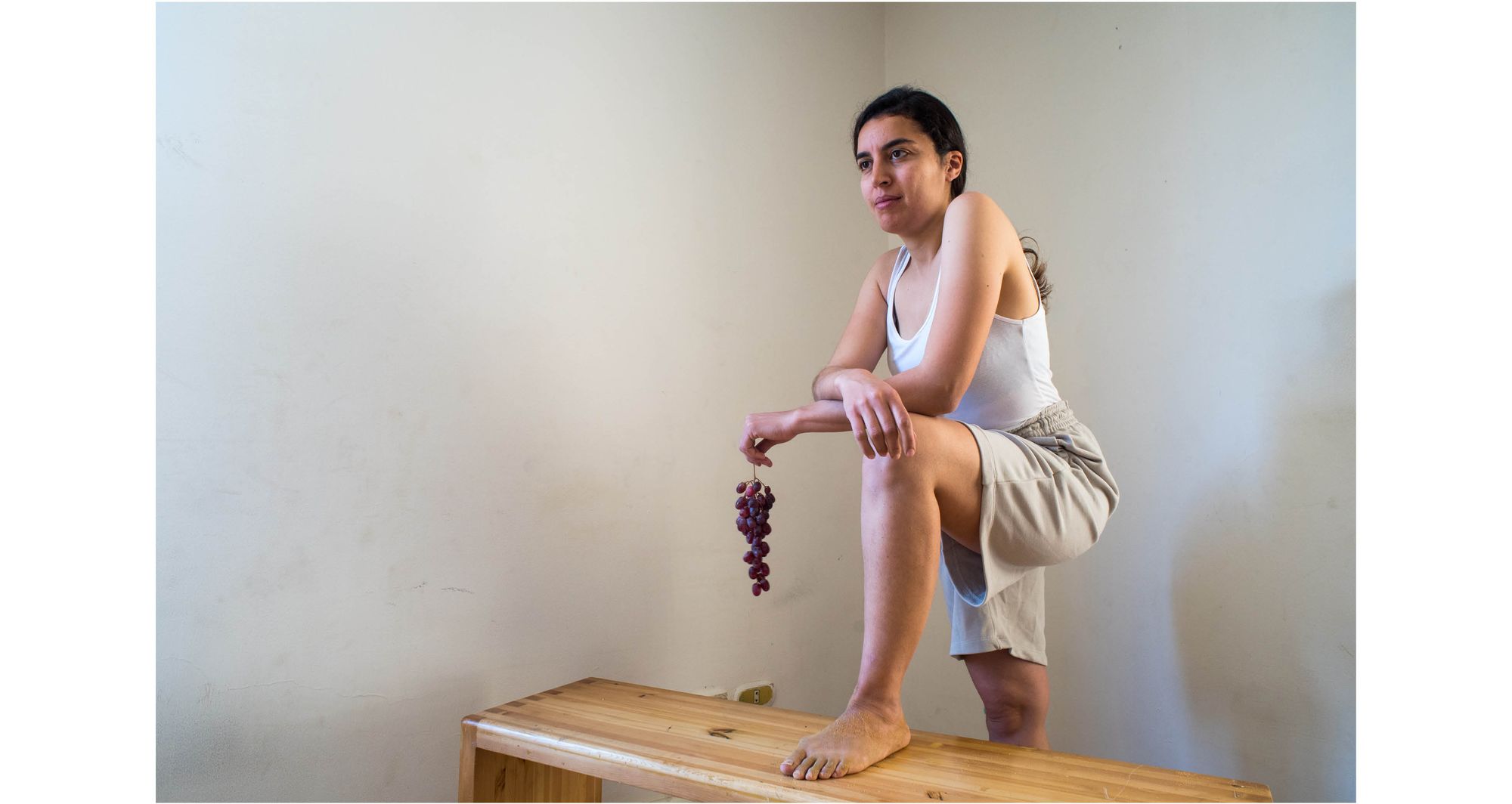
What is the feeling of showing this body of work in Europe versus showing it in Egypt and the Arab-speaking region in general?
At the end of the presentation of Braunschweig Projects in 2019, I realized my project didn’t make sense there. There was something that the audience couldn't quite grasp, understand, or relate to—perhaps they were afraid to relate to it. Maybe they just did not like it [laughs]. Regardless, I am grateful for these opportunities; they’ve made a difference in my career, and I would not have deepened my practice without that support, which was also financial. It’s like when I first traveled to Marseille: without that experience, I wouldn’t fully appreciate the quality of working in Cairo. I like how people react to my work here, and even when they don’t understand, no one would assume that I’m searching for “my freedom.” So it makes sense to do this work locally. I’m also working with family archives including my father’s, which has strengthened the connection between us.
In 2023, you curated your photography exhibition, Farouk Ibrahim: The Legend, at Access Art Space. The exhibition featured the work of a photographer who documented Egypt’s modern history, especially its government officials and celebrities. How did this experience come into being, and how did it inform your practice and vice versa?
By the time COVID-19 hit, I was already questioning being an artist—skeptical of always working on my own projects, which sometimes takes years. I wanted to expose myself to different opportunities to open discussions. I joined the curatorial program TASAWAR Curatorial Studios in Tunis, Tunisia, which was remote. Although I don’t think I could fully switch to being a curator—which requires endlessly writing proposals for funding—I think it makes sense to see other people’s work from a personal perspective. I always try to make connections and build narratives with images, which is how I relate to Farouk Ibrahim’s archive.
“Until the 2011 Revolution, the common people in the streets were not represented in photography. I wanted to help change this.”
Some of his images are incredibly famous, such as his collection of President Mohamed Anwar El-Sadat in his everyday life, though people often don’t know he took these photos. I wanted to balance between those well-known pictures and other images that, in my mind, subvert the mainstream understanding of photojournalism. I was trying to push the boundaries of our acceptance of photography and public figures. For example, in the images I selected of Umm Kulthum, the famous Egyptian singer and Farouk Ibrahim’s close friend, she looks different from what people expect. The most well-known photos of Umm Kulthum depict her either surrounded by politicians or on stage completely in the mood. The photo I chose of her was taken shortly before a concert. She looks worried and hesitant, which brings me closer to her. The same goes for the Nobel Prize scientist Ahmed Zewail: I showed him smoking in a Shisha Café. I consciously selected snaps of the famous actor Omar El Sherif walking in the streets, surrounded by people. I love how the crowd takes him, and all the other people are looking into the camera except for him; he is looking at the people. I ultimately wanted to open a discussion on who represents Egypt. Until the 2011 Revolution, the common people in the streets were not represented in photography. I wanted to help change this.
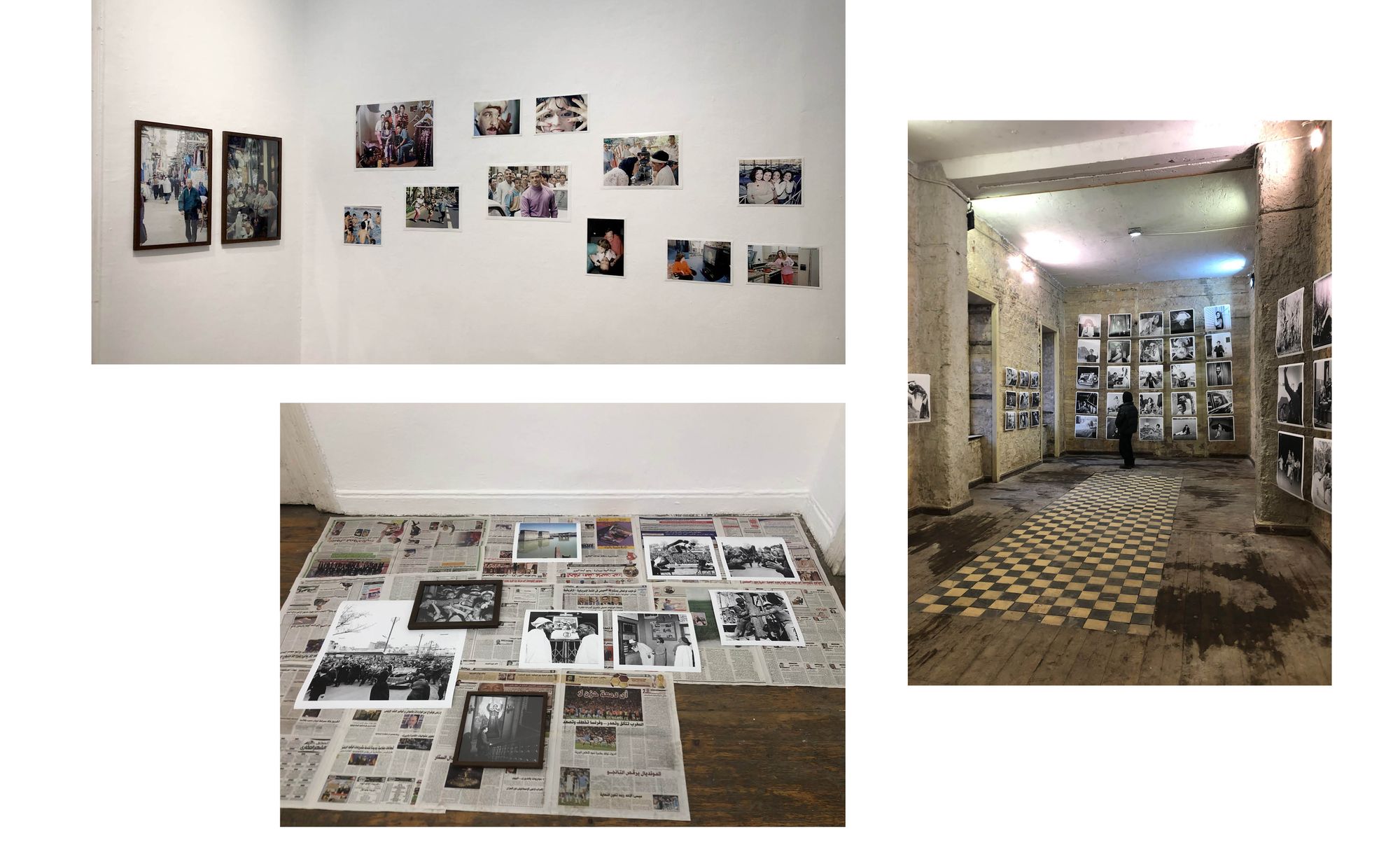
This text was possible thanks to a collaboration with For Us, With Us, By Us–—لنا، عنّا، معنا curated by Mayar El Bakry, Noureldin Ahmed, Randa Hadi, Sherine Salla, Nada Ezzeldin, and Sohaila Khaled. For Us, With Us, By Us—لنا، عنّا، معنا was a series of roundtable conversations centering the voices of cultural practitioners, exploring themes of transnational identities beyond the Western canon. The program was co-produced in collaboration with Archief Cairo, cifrcifrcifr, and Futuress, and financed by ProHelvetia.
Nadia Mounier (she/her) is a visual artist working with photography and video. Her work is interested in representations of the self by exploring aspects of privacy, censorship, digital stagings, and body performance within the public and private spheres. As an artist and young curator, she is passionate about modes of collaboration, collective work, and alternative arts education programs. Nadia is part of various art collectives that are interested in the city, image production, motherhood, and politics of representation. She participated in numerous residency programs such as the Goethe Institute fellowship at Akademie Schloss Solitude in 2018 (DE) and Braunschweig Projects at HBK Hochschule für Bildende Künste Braunschweig in 2019 (DE). She is currently based in Cairo, Egypt where she is managing the Arts and Culture program at The Arab Digital Expression Foundation (ADEF).
Nina Paim (she/her) is a Brazilian designer, curator, and editor based in Porto. Her work spans exhibitions, workshops, and events, including Escola Aberta (Rio de Janeiro, 2012), Beyond Change (Basel, 2018), Department of Non-Binaries (Sharjah, 2018), Feminist Findings (Berlin, 2020), and, most recently, Etceteras: Feminist Festival of Publishing and Design (Porto, 2023). She has co-edited Taking a Line for a Walk (Spector Books, 2016), Design Struggles (Valiz, 2021), and Alter-Care (Esad-Idea, 2021). A three-time Swiss Design Award recipient, Nina has lectured internationally and her writing has been published by Occasional Papers (UK), Les Presses du Réel (FR), and the Korea Society of Typography (KR). In 2020, she co-founded the feminist platform Futuress.org, which she co-directed until 2023, when she launched Bikini Books, an independent publisher for design. In 2024, Nina was awarded an honorary doctorate from the London College of Communication at the University of the Arts London.
Title image: Photo from the Cairo Snaps series by Nadia Mounier.

